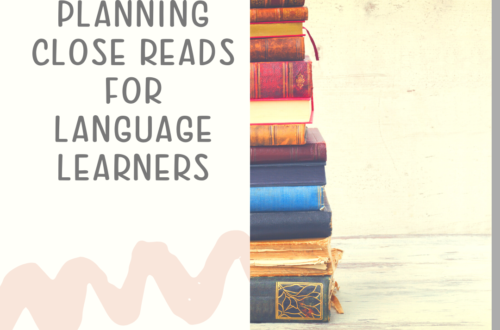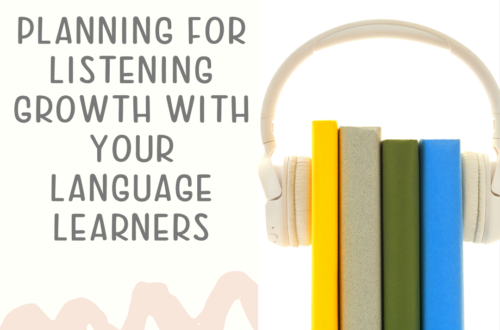
How to Support English Language Learners in Math
Something magical happened at my school three years ago that opened my eyes to one of the true needs of English Language Learners. Our school piloted a program that was completely unheard of in our school district. I had the honor of being a part of this life changing experience. Our school took part in the first newcomer program. During the day 50 newcomers in grades 6-8 we a part of sheltered instruction. In our school setting, newcomers had a science, social studies, and an ESL class from an ESL teacher. Math was taught to by grade level math teachers, who had an interest and desire of supporting English Language Learners. During this time I was working with the math teachers I learned some valuable tips I would like to share and download the Math Differentiation Strategies.
Use visuals as much as possible with your newcomers in math.
This tip is easy to implement and can benefit all of your students in math. An example of using visuals in math could be as simple as counting with pictures of apples. The students learn the vocabulary and the skill.
Introduce and pre-teach key vocabulary to students before introducing word problems and new concepts.
Just as you do when you are teaching a new book or text, encourage math teachers to pre-teach key academic terms in the word problems. Math teachers can use a Frayer Model graphic organizer to teach new vocabulary and phrases.

Use manipulatives to support students learning in math.
Manipulatives are important for kinesthetic and visual learners during the lesson. These supports also increases engagement in the classroom. I can remember when our students were learning place value they had manipulatives to support them.
Math video tutorials are powerful!
Think about when you want to learn something new, you might just go to YouTube and click on a topic. There are so many tutorials that provide students with step-by-step instructions on how to learn math concepts. I used them all the time when I was teaching myself and the students a new math concept. The one that is highly recommended is Khan Academy. What makes Kahn Academy great is that it FREE and it aligns directly with the math Common Core Standards. So if whatever math concepts your students are learning there is a high chance there is a step-by-step video on Khan Academy.

Math Interactive Notebook
I had the pleasure of working with a phenomenal math teacher Mrs. Francesca Hall who is an advocate for English Language Learners. In her classroom she used math interactive notebooks. In the notebooks there was basic numbers, formulas, and tips. Whatever the student was going to learn for that lesson was put into a notebook. It proved to be a valuable resource that the students used throughout their year in math.
If you would like more tips on how to support your English Language Learners in math, download the Math Differentiation Strategies guide. The Math Differentiation Strategies guide provides scaffolds that sets your English Language Learners up for success!
Math and learning English go together like peanut butter and jelly. I would love to hear how you are supporting your English Language Learners in math. Leave a comment below with your tips and thoughts.





2 Comments
Kelly
Hi Millie, Thank you for this post and the cheat sheet! I teach middle school math too, but I’m a mainstream math teacher. My favorite way to build academic vocabulary is the the 4-square/Frayer model, so I love that you emphasized that here. Hope you have a great weekend!
Millie
Hey Kelly!
Thank you so much for stopping by. The students love the 4-square/Frayer model and academic vocabulary is so important for our ELLs. Thank you for being so intentional with your instruction.